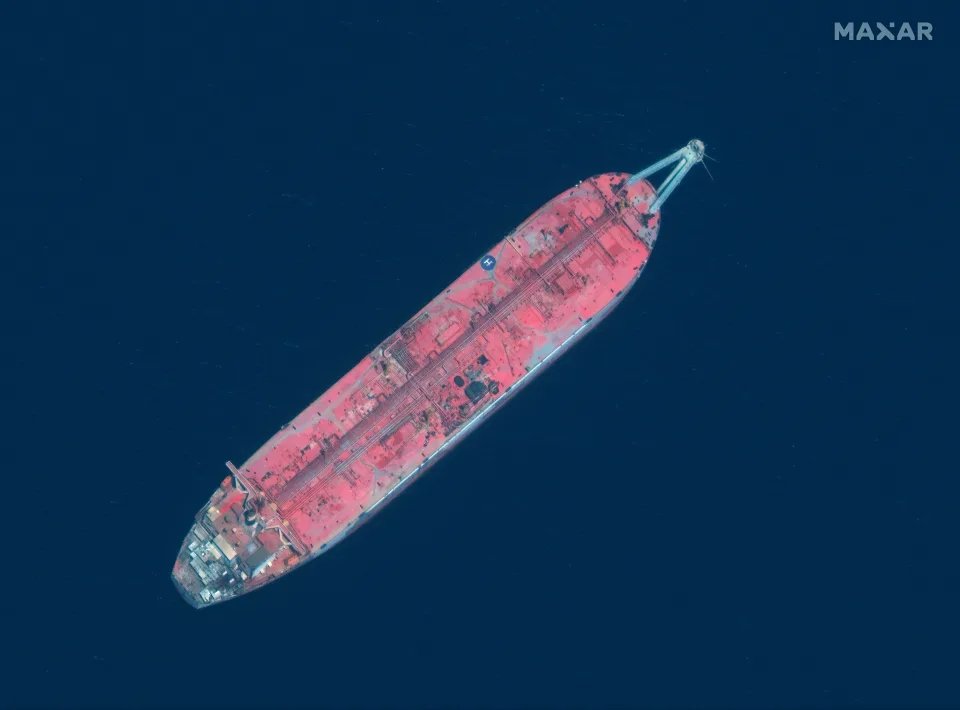Moored in the Red Sea, north of the Yemeni city of Al Hudaydah sits the floating oil storage and offloading vessel (FSO) Safer. Loaded with more than 1.14 million barrels of oil, the Safer has raised serious concerns for the international community; she is quickly, and literally, falling apart, and could play host to an environmental disaster four times worse than the 1989 Exxon Valdez oil spill. Worse, the Red Sea’s turbulent windy season is only a couple of months away.
Earlier this year, the United Nations began a crowdfunding campaign to raise the $80 million required to drain the oil from the FSO Safer and move it to another vessel. By late August this year, the UN had raised $68 million. Two weeks ago, Canada stepped in to pledge $2.5 million to the project, and yesterday, the Netherlands promised $7.5 million, raising hopes that any funding shortfalls can be quickly made up.
DC-based freelance journalist and analyst on Yemeni affairs, Hannah Porter, praised the effort as an “important and necessary step towards resolving the Safer issue and eliminating the threat of a catastrophic oil spill” in an interview with the news website Middle East Eye.
However, cash is only one part of the problem.
The Safer floats in waters currently held by the Iranian-aligned Houthis, a rebel militia group that swept across Yemen in 2014 and took control of the capital, Sanaa, during a brutal and bloody civil war. Dividing the nation in half, the Houthis pushed the remnants of the Yemeni government south.
Currently, an uneasy ceasefire exists between the Houthis, who control the northwest of Yemen, and the Saudi-backed government, which holds the southeast.
The Japanese-built Safer has been operating off the coast of Yemen since the late 1980s, acting as a storage container for oil exports. In the spring of 2015, the Houthi rebels claimed the Safer when they took control of the coastline near her mooring. The Saudi-backed Yemen government also claims ownership of the vessel. The Safer has not been serviced in seven years, and analysts say it is a “floating bomb.” In 2018, the Houthis requested support from the UN to help deal with the looming environmental crisis posed by the Safer. A team from the UN was set to inspect the Safer in January of 2021- however, the visit was canceled when the Houthis would not assure the safety of the UN-led team.
In March of 2022, the Houthis agreed to allow the United Nations to pump the oil from the Safer to another vessel. With the $80 million target nearly reached, there is some hope that the fast-approaching catastrophe can be avoided.
“The reality is that an agreement to address the FSO Safer threat, and funding to support that operation, does not guarantee that an oil spill will be avoided,” Porter told the Middle East Eye. “The real test will be whether or not this operation is, in fact, carried out and the Safer’s oil is offloaded onto a secure vessel…In order for this operation to take place, the Sanaa authorities need to be cooperative and need to facilitate the offloading and replacement of this vessel, including by ensuring the security and safety of those conducting the operation.”
With warnings from the UN and other experts, the Safer is in “imminent” danger of breaking up. There are concerns that gases have built up in the cargo holds of the vessel, and enough heat could cause those gases to ignite, turning the Safer into a giant bomb. Others are concerned that the rusting hull could crack, releasing a million plus barrels of oil into the Red Sea.
According to the UN, the spill would “expose millions of people to highly polluted air, and cut off food, fuel and other life-saving supplies to Yemen, where 17 million people already need food aid.”
Experts warn that cleaning up such a spill would hover around $20 billion. Moreover, the environmental impact would be significant. Local ecosystems would be destroyed, the fishing industry would collapse, and all trade in and out of the Red Sea, including the Suez Canal, could grind to a halt.
The Houthis and the Yemeni government have significant interest in the oil stored on the Safer. Valued at roughly $80 million USD, both parties refuse to give up ownership, making the political situation tumultuous.
“They don’t really understand how grave the situation is,” explained Hadil Almowafak, a Research Fellow at the Yemen Policy Center. “It’s to be expected from a militia that really doesn’t care what happens. As long as they can use it as a political tool to exact concessions from the other party, that is all they care about.”
With the world’s oceans knowing no borders, the Safer poses a serious global threat. While the international community has, albeit very slowly, gathered the funds to drain the Safer, the Red Sea’s windy season is fast approaching, and we could all be facing a very turbulent year.
MJ Banias is a journalist who covers defense, science, and technology. Follow him on Twitter @mjbanias.

